
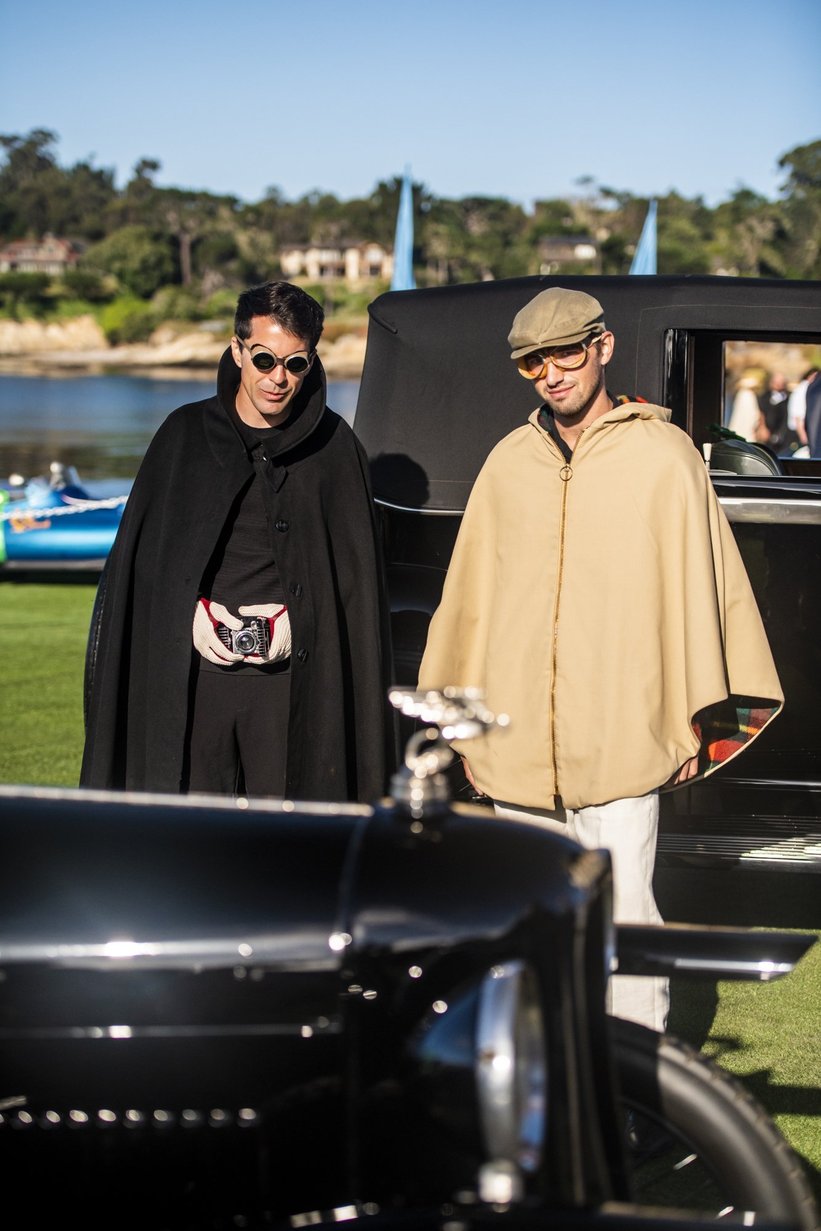
In summer 2025, the car world is on the brink of a nervous breakdown. While trade wars, tarrifs and an endless stream of high-pitched Tiktok videos have already driven the automotive industry into a frenzy, carmakers are desperately trying to reinvent the wheel while not being run over by new technologies, emerging markets and fast-changing consumer tastes. Meanwhile, the demand for even more bespoke, riduclously fast and eyewatering expensive tech billionaire hypercars is growing — the wildest creations like the Meyers Manx all-terrain hyperbuggy LFG, Gordon Murray's McLaren F1 restomod or the one-off Bugatti Brouillard all had their 15-seconds of Instagram fame last Friday at The Quail, the garden-party-gone-car-show of Monterey Car Week. Meanwhile at RM Sotheby's a tailor-made 2025 Ferrari Daytona SP3 sold for charity for 26,000,000 US-Dollars. But while the contemporary car world is rotating faster and faster, there is one institution that stands against the turmoils of time, a world heritage site for automotive culture in which the coachbuilt art déco creations from a century ago are still considered the gold standard of sophistication and taste: The Pebble Beach Concours d'Elegance, held on the lawn of California's most iconic golf course sind 1950.
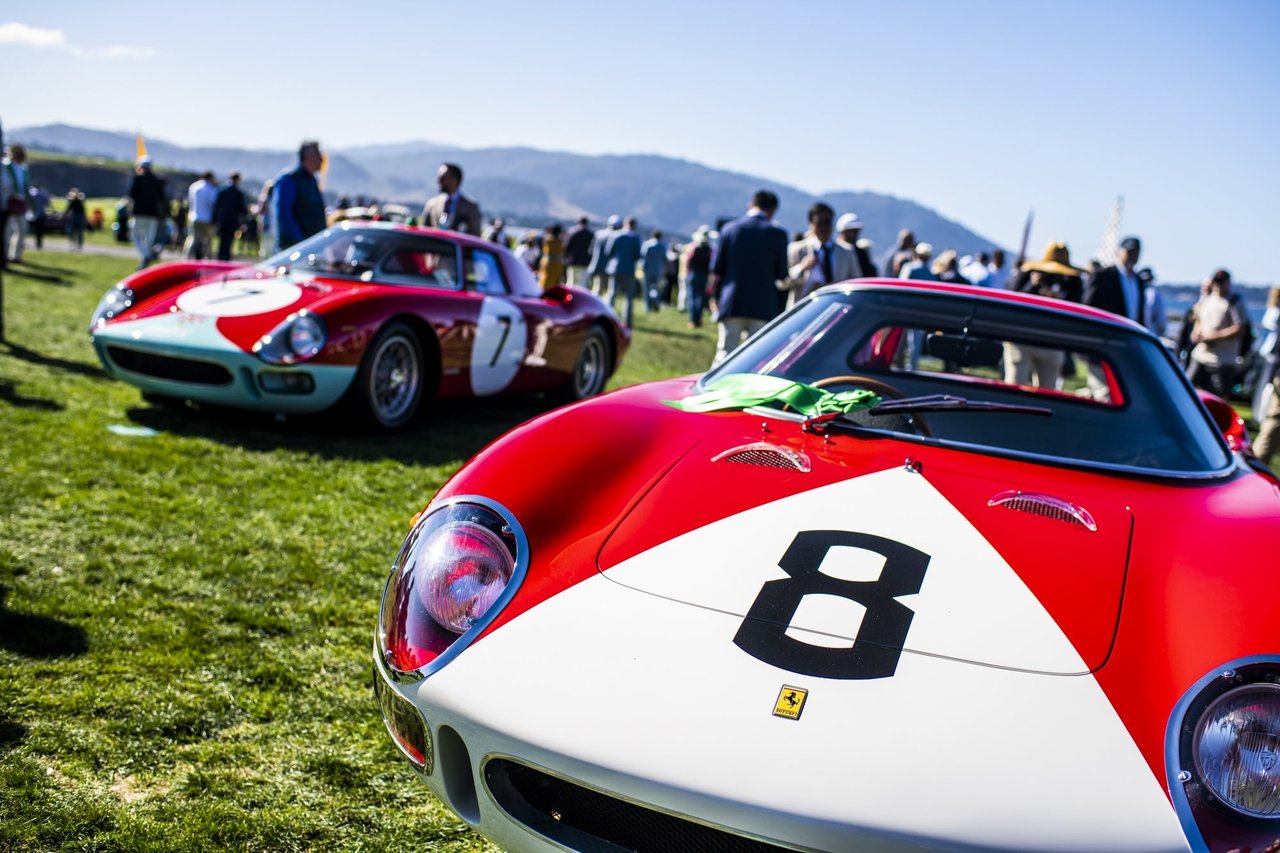
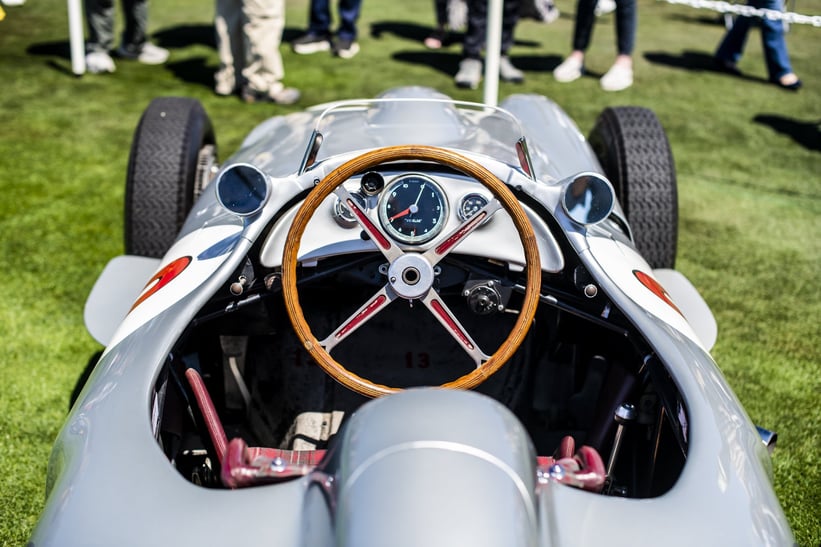
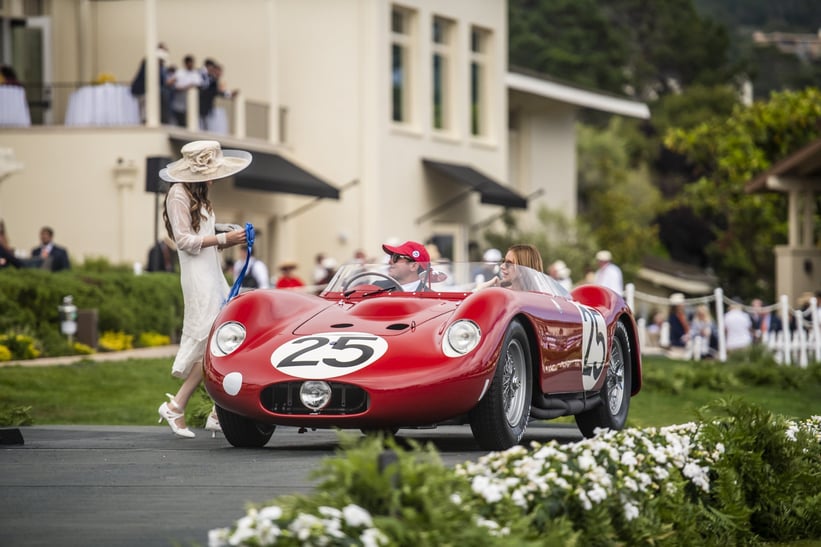
This year, 229 cars — including 55 international entries from 22 countries and 174 US entries from 31 states— competed for class wins and the top prize of the classic car world, the "Best of Show" trophy. So on Sunday morning at 5:30am, the most die-hard car enthusiasts, photographers, and collectors show up in the half-light to watch the priceless show cars being driven onto the lawn and positioned for judging on the 18th fairway of Pebble Beach Golf Links. Naturally, some of the most desirable and iconic holy-grail collector cars from the 20th century lined up along the Pacific shores. One could marvel at Ferrari 250 LMs, Testarossas and Tour de France, Aston Martin DB4GT Zagatos, Lamborghini Miuras and Mercedes-Benz 300SLs in the sunrise for hours — but we are usually drawn towards the more obscure and surprising creations of automotive history. And this year, there was plenty to see. The Pebble Beach selecting committee had created special classes to salute not one, but three centennials, as Chrysler, Invicta and Moretti all celebrate their 100th birthday in 2025.
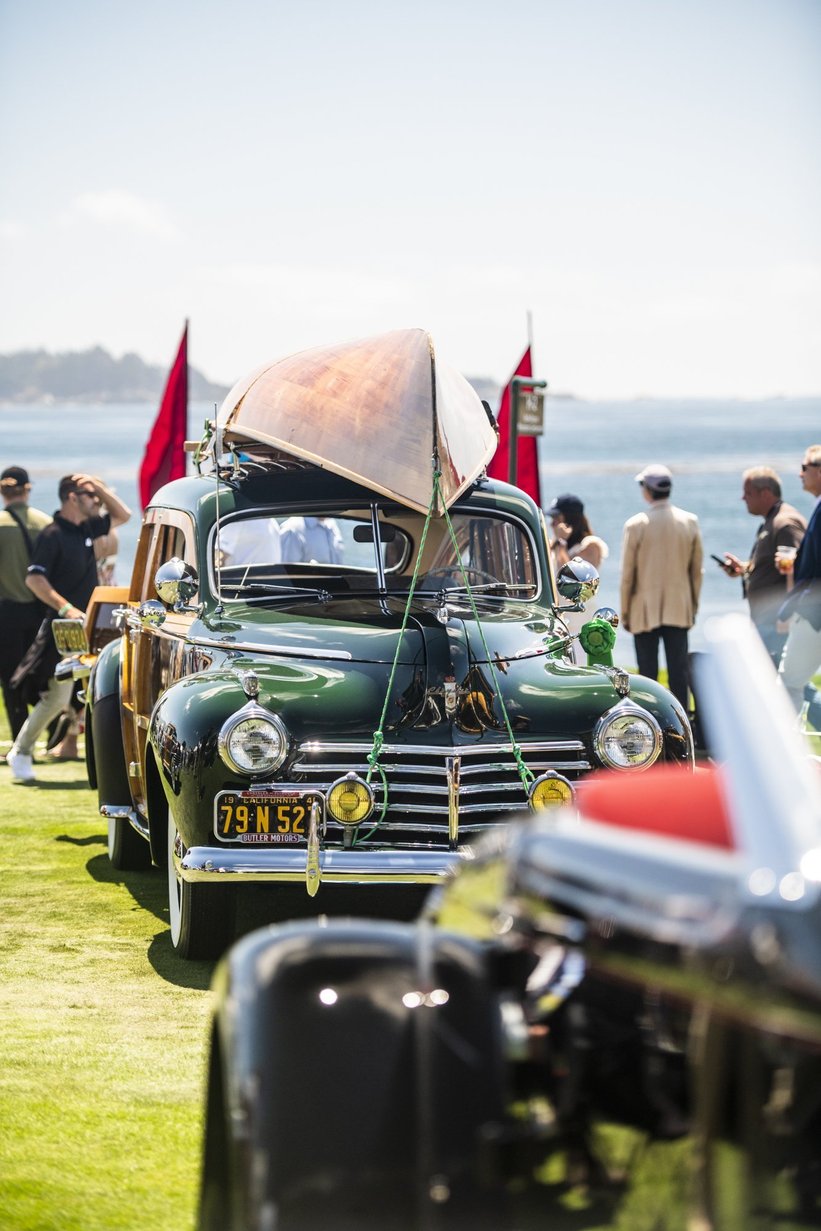
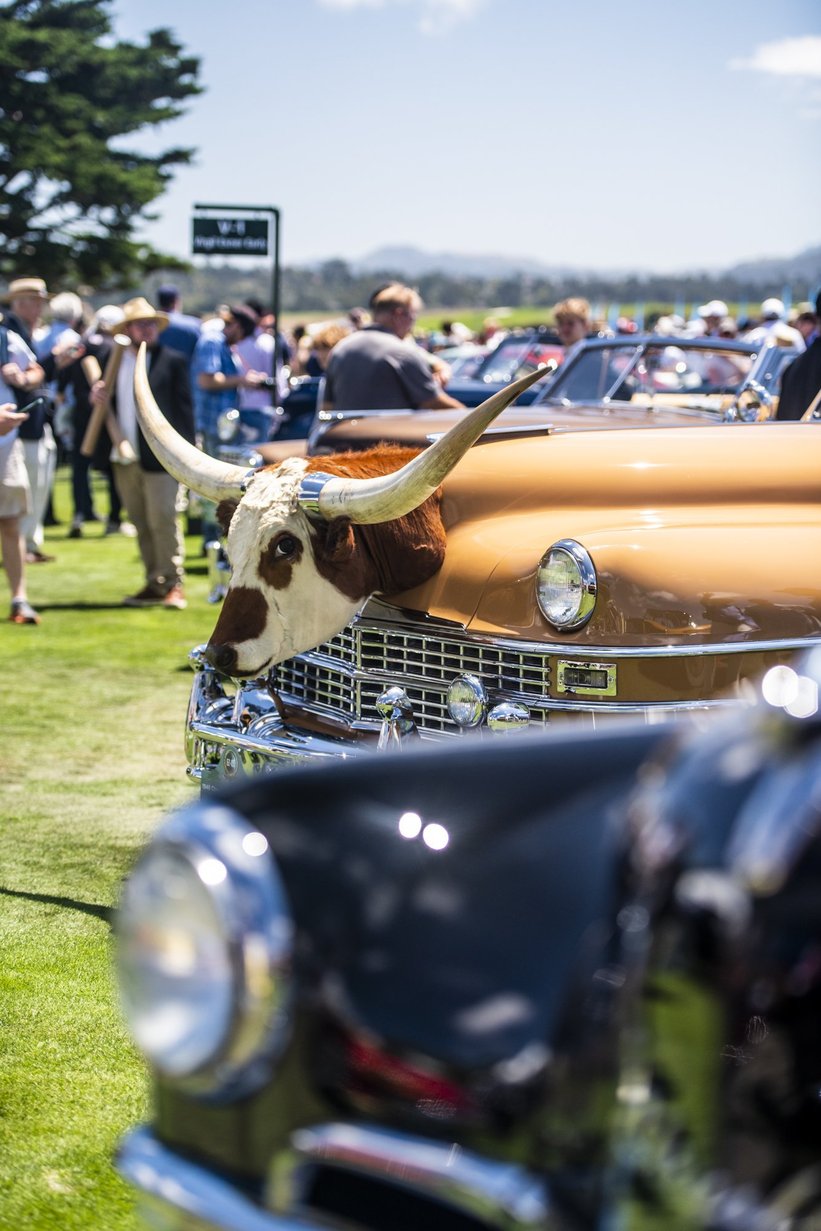
Chrysler was founded in 1925 by railroad mechanic Walter P. Chrysler. The marque quickly earned a reputation for technical innovation and collaborations with the finest pre-war coachbuilders. The 1930s saw streamlined masterpieces like the Airflow, followed by the charming Town & Country “woodies” of the 1940s — often paired with a wooden canoe on the roof, like seen in this year's concours — and the sleek, finned 1950s models. A highlight of the centennary display at Pebble Beacdh was the rare Imperial Parade Phaeton, one of just three, proudly flying star-spangled banners. The Chrysler centennial class was won by a 1933 Chrysler Imperial CL LeBaron Phaeton while a 1942 Chrysler Town and Country Station Wagon claimed the win in its category.
Invicta was created by Noel Macklin in Cobham, England and operated for just one decade, from 1925 to 1935. Known for lightweight, agile 2.5-litre Meadows-engine cars, they gained fame when Violette Cordery won sprints at Brooklands and set endurance records at Monza and Montlhéry. Their standout model, the 1930 low-chassis Invicta S-type with a 4.5-litre six, saw just 77 cars built before the Great Depression ended the marque. The jury awarded the class win to a 1933 Invicta 4½ Litre S Type Corsica Drophead Coupé from Bahrain.
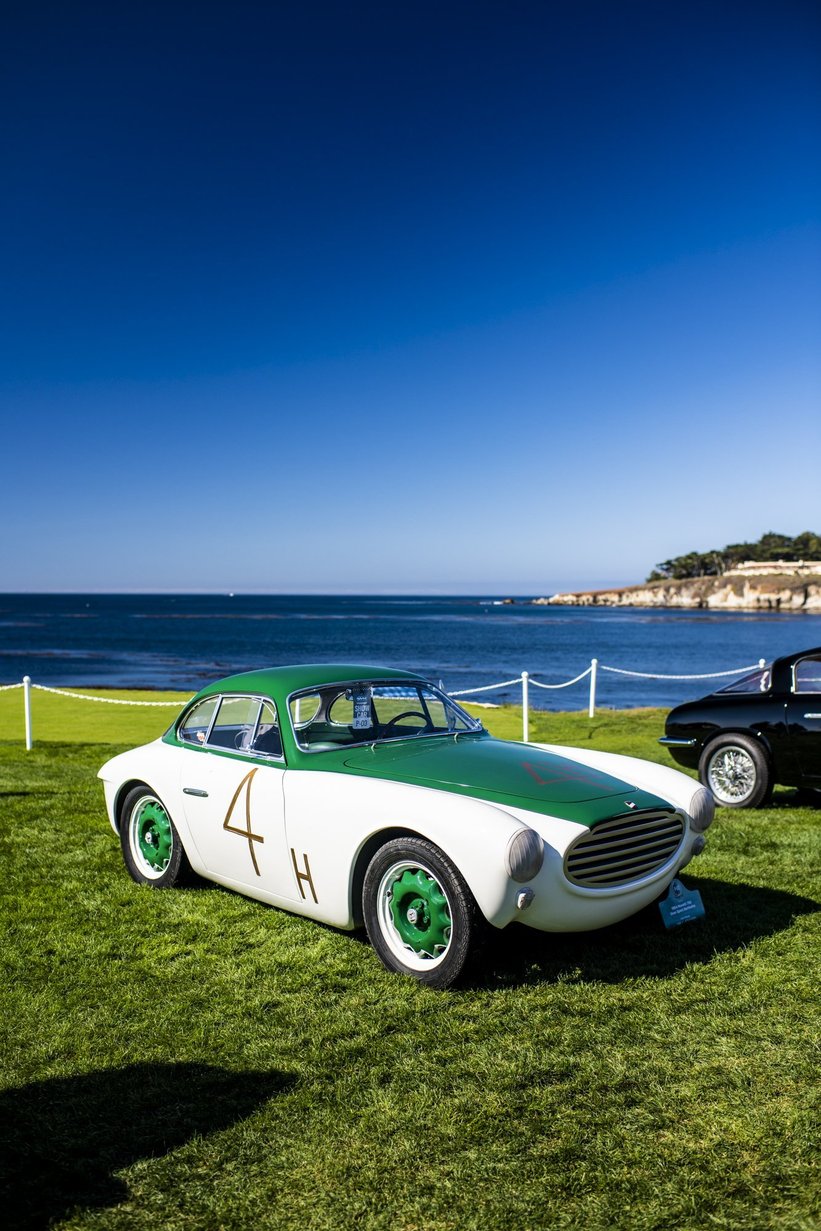
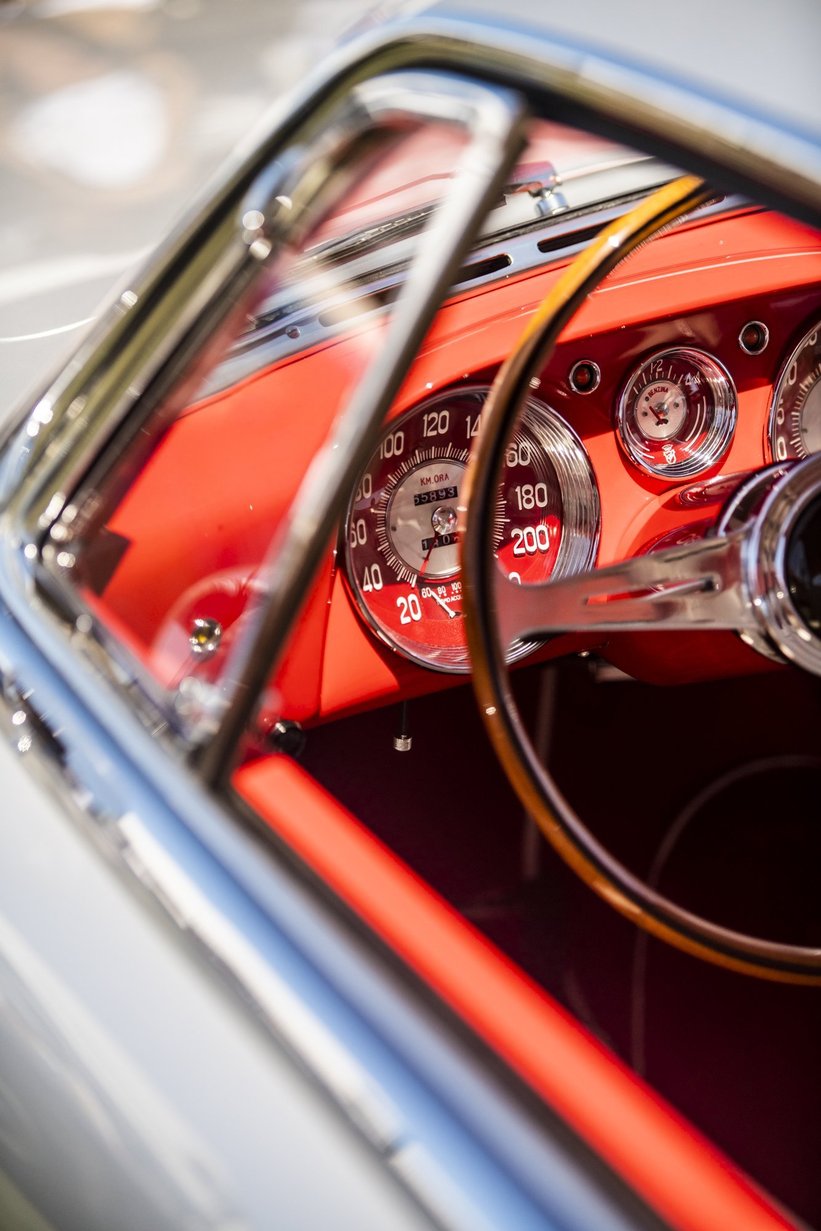
Italy’s jewel-like Moretti brand began it's life in 1925 with motorcycles and microcars before moving to trucks and conventional automobiles after World War II. Unlike many “etceterini,” Moretti designed nearly all components in-house, from engines to transmissions. Later collaborations with Fiat produced sports cars until 1989, but it was the two-tone 750 Gran Sport and sleek all-black 1200 Gran Sport coupes that stole the show at the Pebble Beach concours. In the end, Ariel Shraga, from London won the class with his 1954 Moretti 750 Gran Sport Berlinetta.
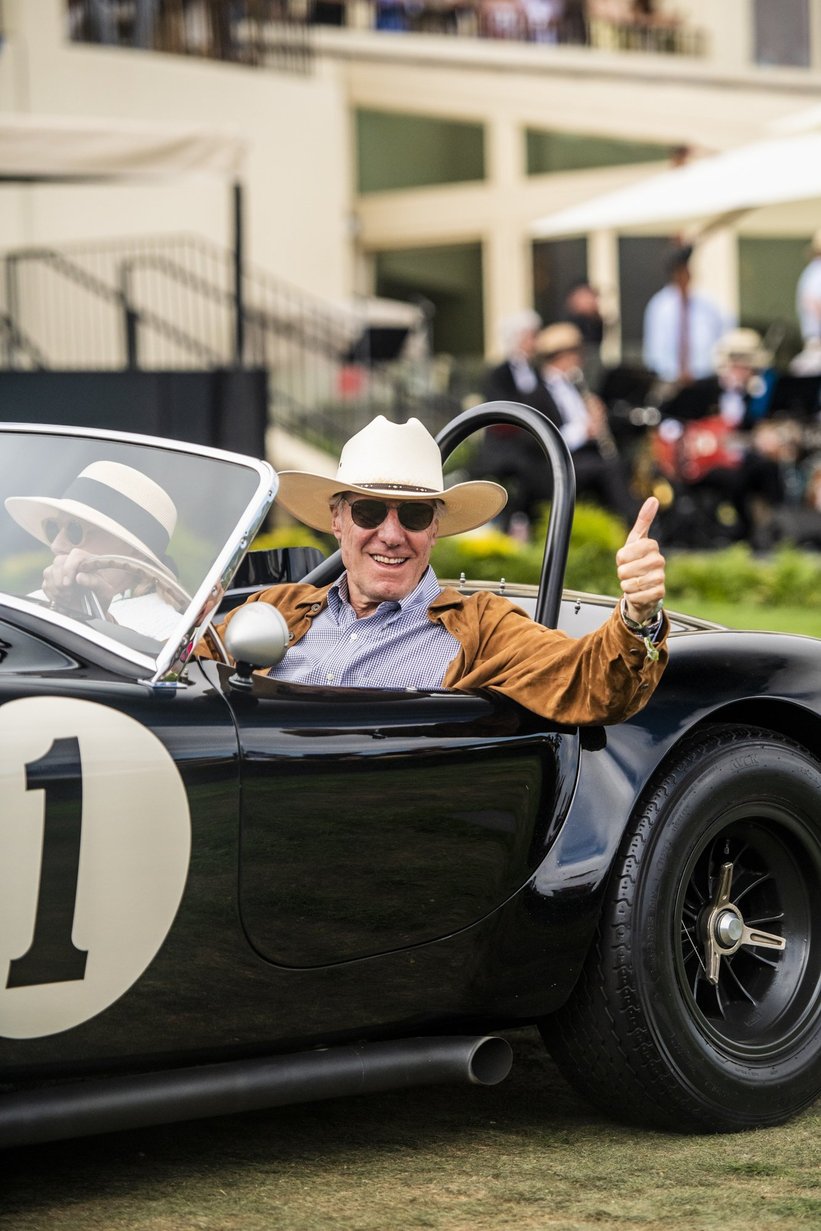
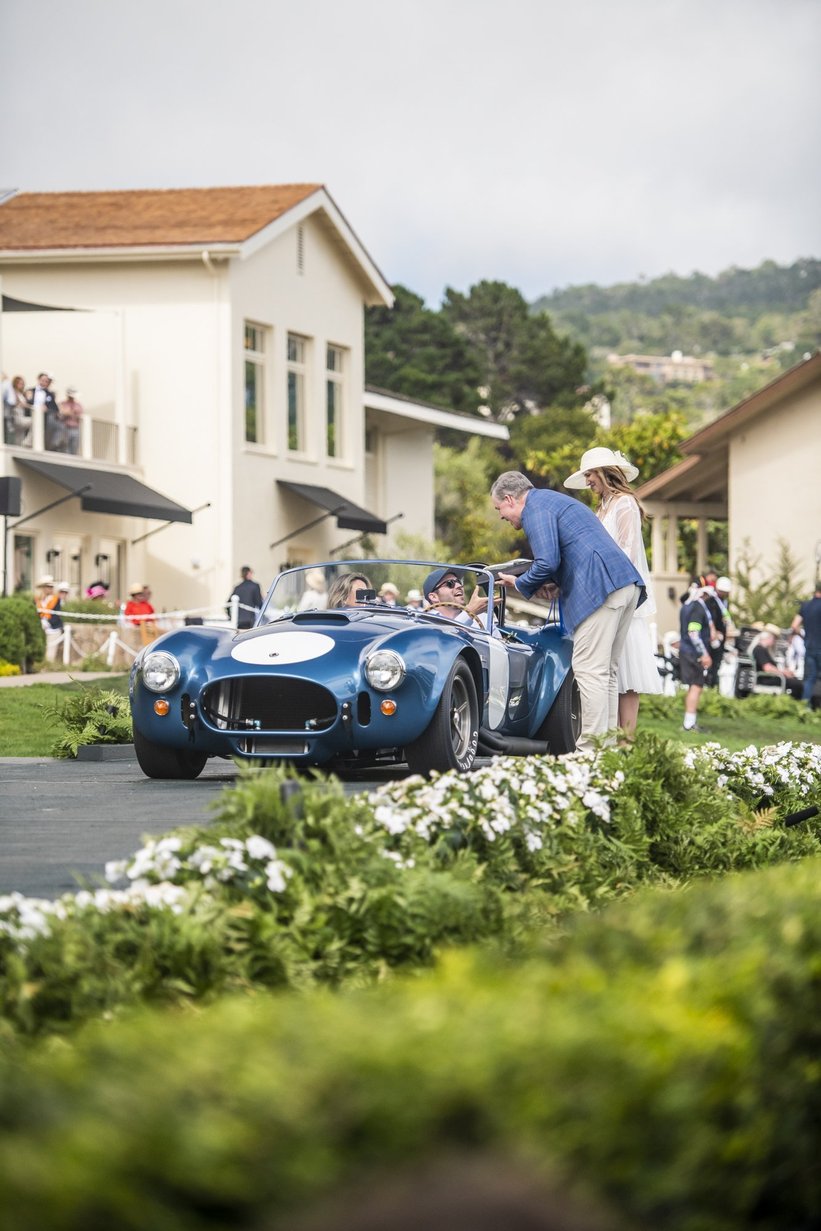
Another classic from America's automotive Hall of Fame, the Shelby Cobra 427, enjoys its 60th anniversary this year. Inarguably one of the most feared competitors during its era, their 427 cubic inch Ford engines helped Carroll Shelby’s roadsters to dominate SCCA racing from the outset. The Pebble Beach committee welcomed the four variations of this legendary sports racer — ‘Comp’ (competition), S/C (semi-competition), Street and Narrow Hip — in addition to the first and last production Cobras. The winning car was a 1966 Shelby Cobra 427 Competition Roadster brought to California by Peter Klutt of Halton Hills, Canada.
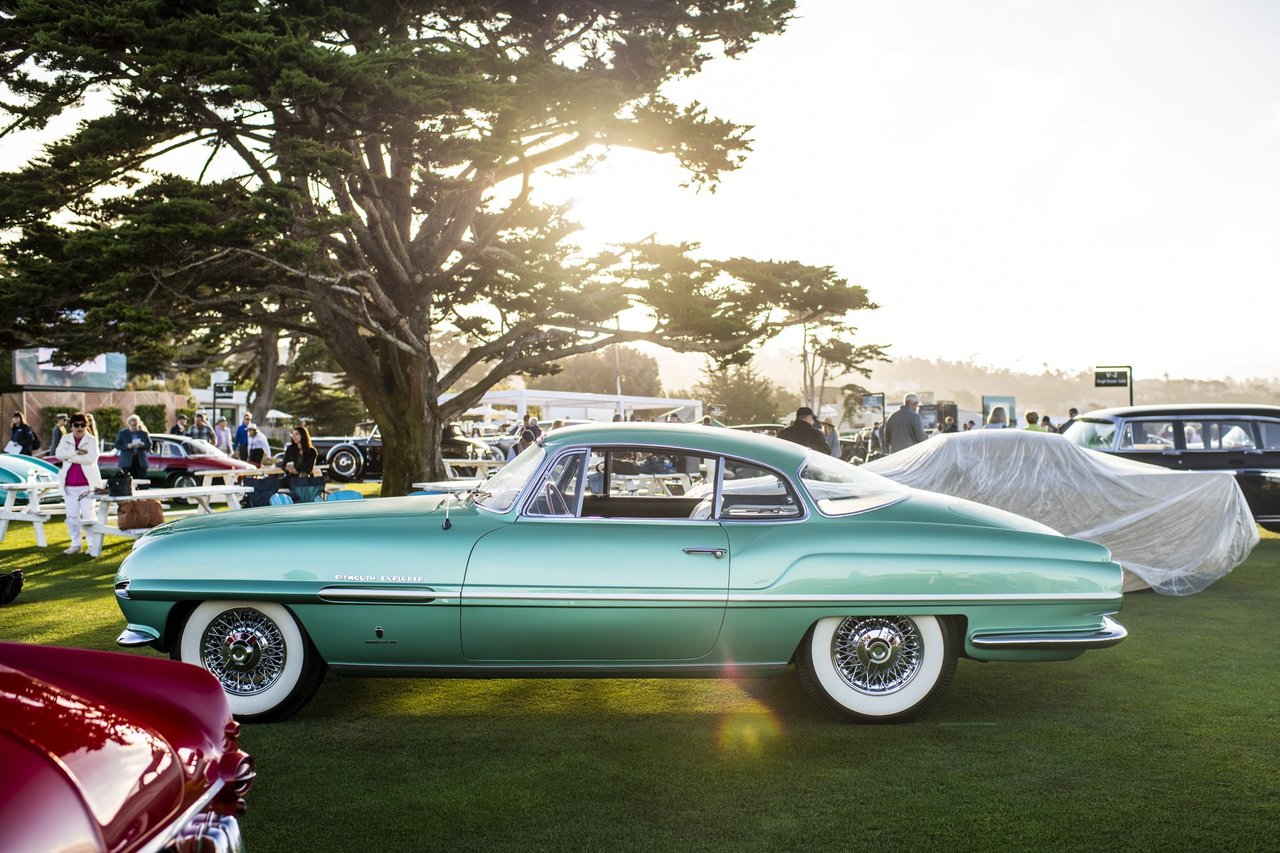
Meanwhile, the Pebble Beach concours payed homage to Virgil Exner, one of the 20th century’s most visionary automotive designers, renowned for reshaping American car styling in the post-war era. Rising swiftly through the ranks — Chief Stylist at Pontiac by 26, Chief Styling Engineer at Studebaker by 29 — Exner brought flair and innovation to every automobile he worked on. His collaborations with Ghia produced some of the era’s most striking coachbuilt cars, from the Italo-American Dual-Ghias to the weirdly wonderful Type 101 Bugatti Roadster, leaving a lasting mark on both American and European automotive design. At Pebble Beach, the display included a 1952 Chrysler Styling Special and a 1957 Dual Motors Dual-Ghia Convertible, which claimed wins in the two Exner classes, as well as a 1955 Chrysler Falcon which won the Spirit of Virgil Exner Trophy.
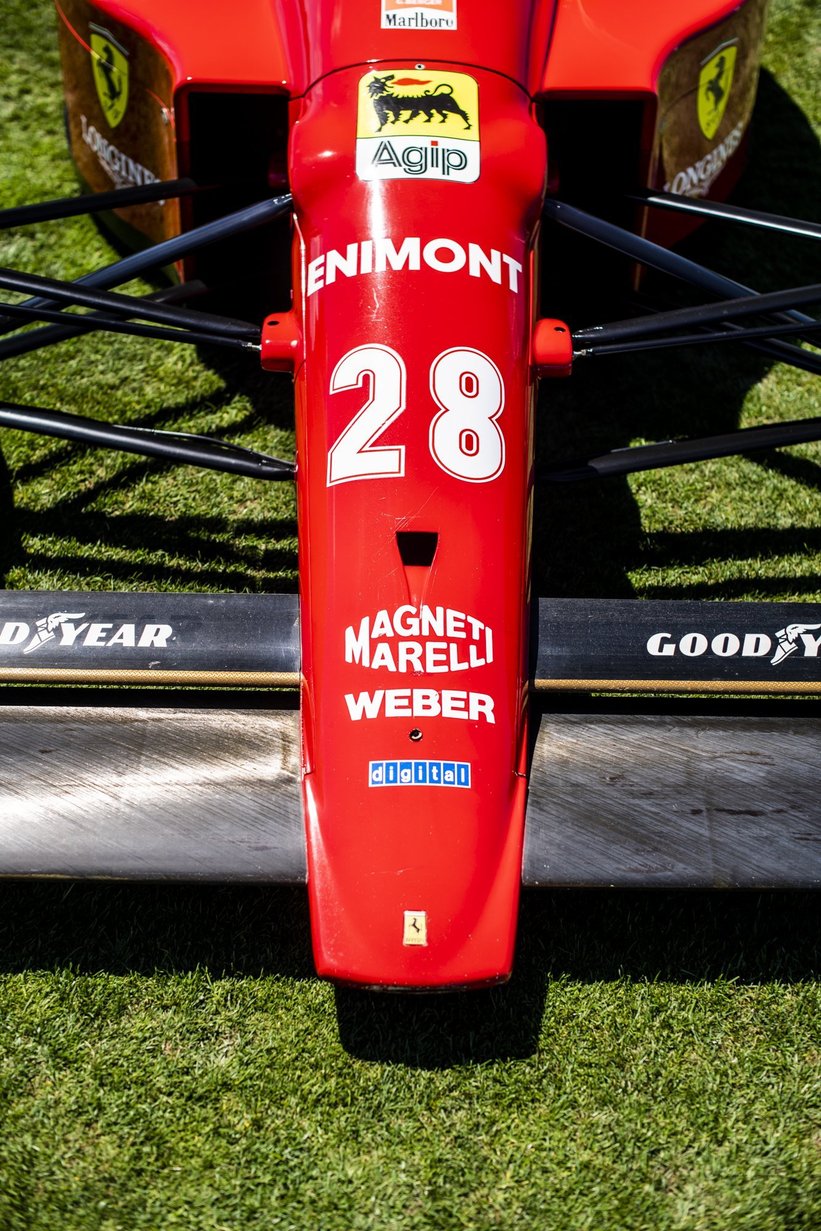
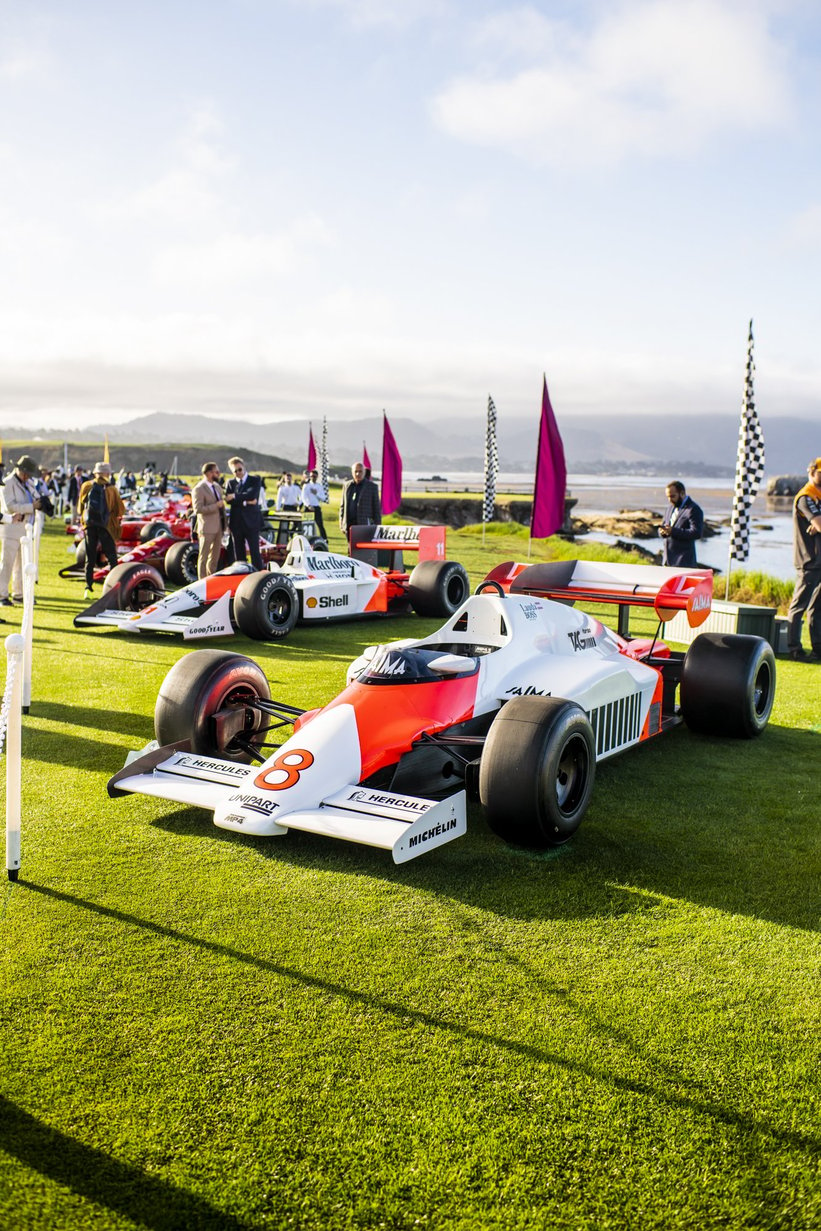
It's all about coachbuilt elegance and iconic design at Pebble Beach — but for the 75th anniversary of Formula 1 racing, even the world's most sophisticated car club had to allow some troublemakers on it's manicured golf lawns: Lining up on the Pacific shores, three classes of mythical monoposti racers took visitors on a one-in-a-lifetime journey through racing history.
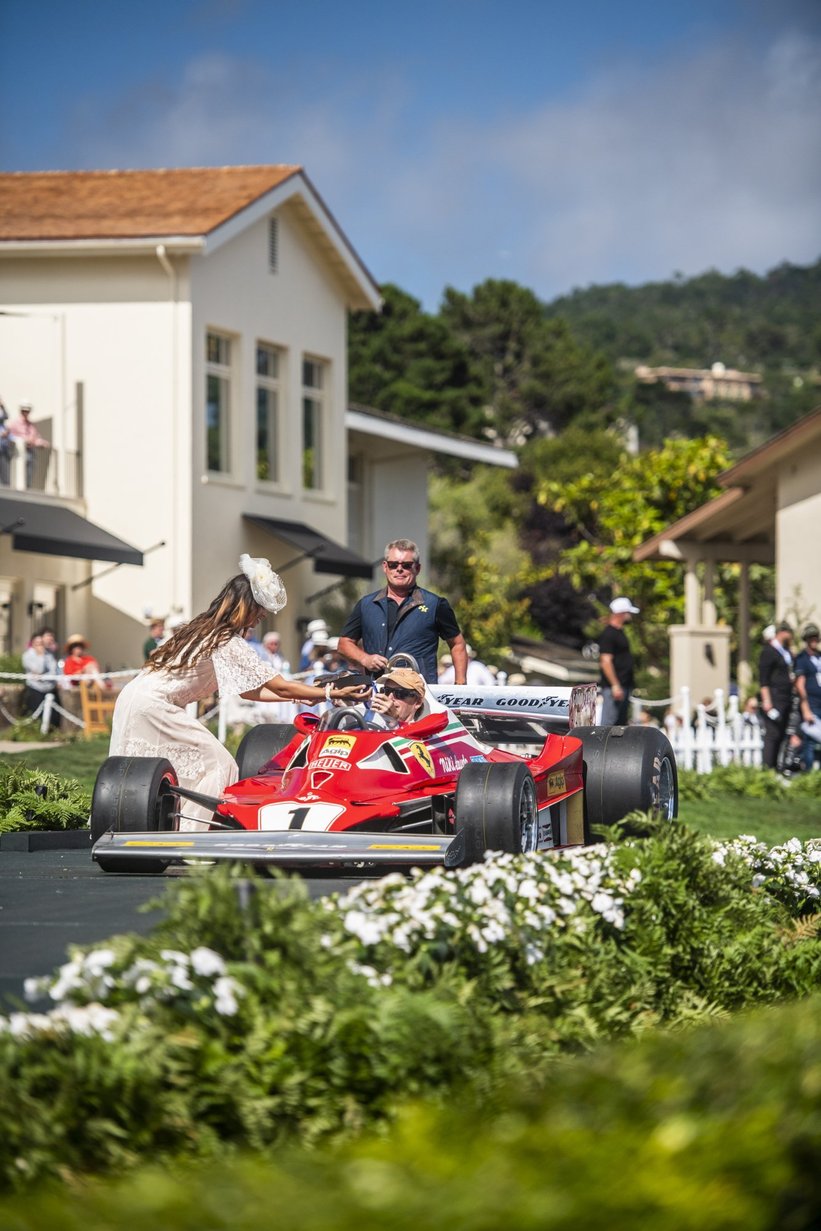
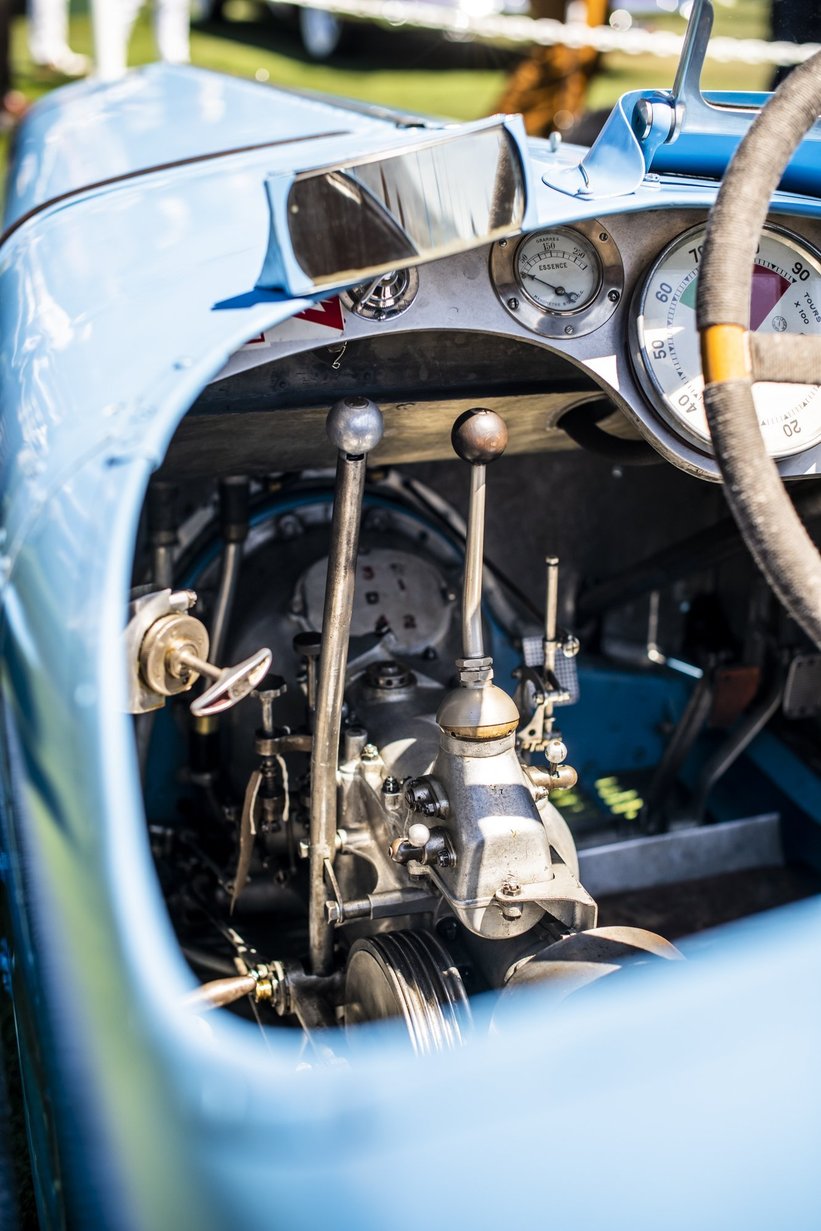
Clearly ranking among the loudest cars ever started at Pebble Beach, the 1989 Ferrari 640 Formula 1entered by Simon Furlonger and Egon Zweimüller won the Chairman’s Trophy while the Phill Hill Cup was claimed by a 1970 March 701 Formula 1 brought to California by Tom Hartley Jnr. The class wins in the Formula 1 classes went to a 1967 Lotus 49 and a 1976 Ferrari 312 T2 once piloted by Niki Lauda.
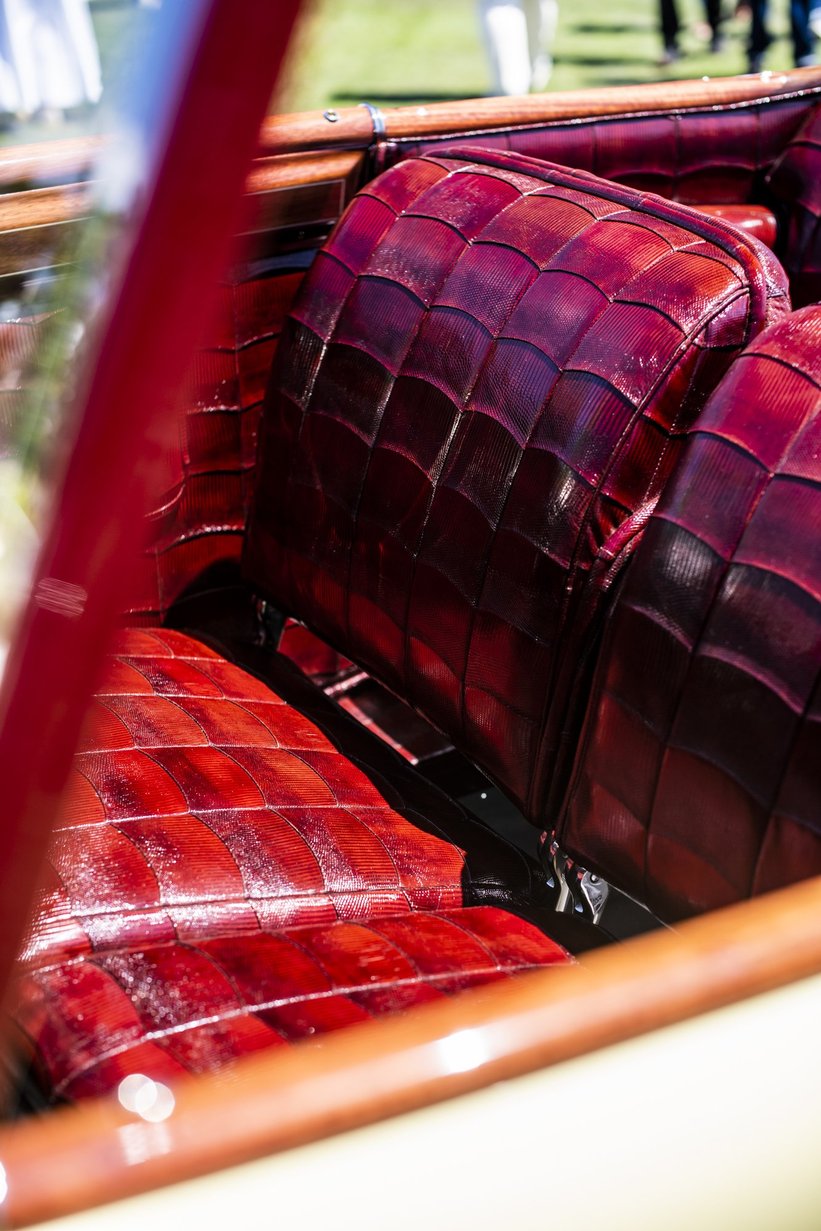
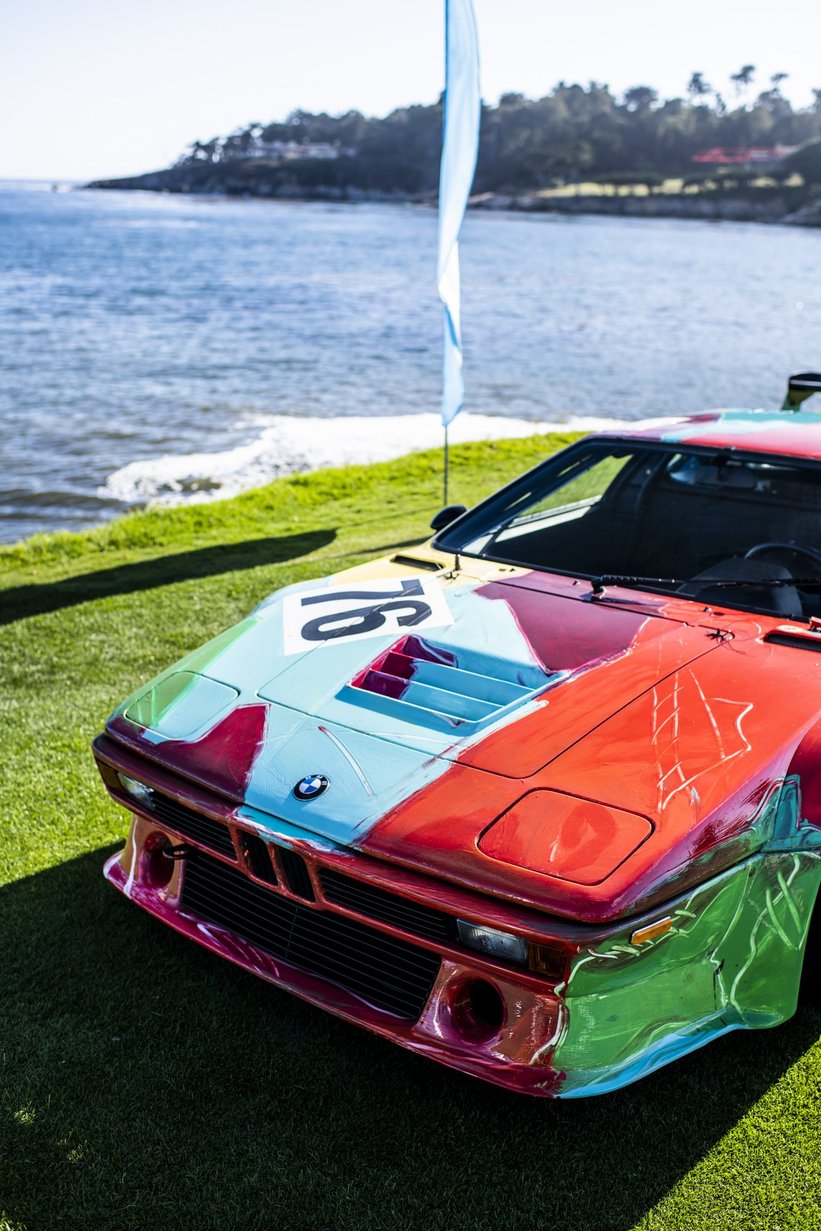
Meanwhile, the 50th anniversary of the BMW Art Cars was celebrated with a display of the most famous artist creations, including the invaluable Andy Warhol BMW M1, while a fleet of well-battered Land Rovers reminded us of the brand's most adventurous overland exhibitions from the last 75 years.
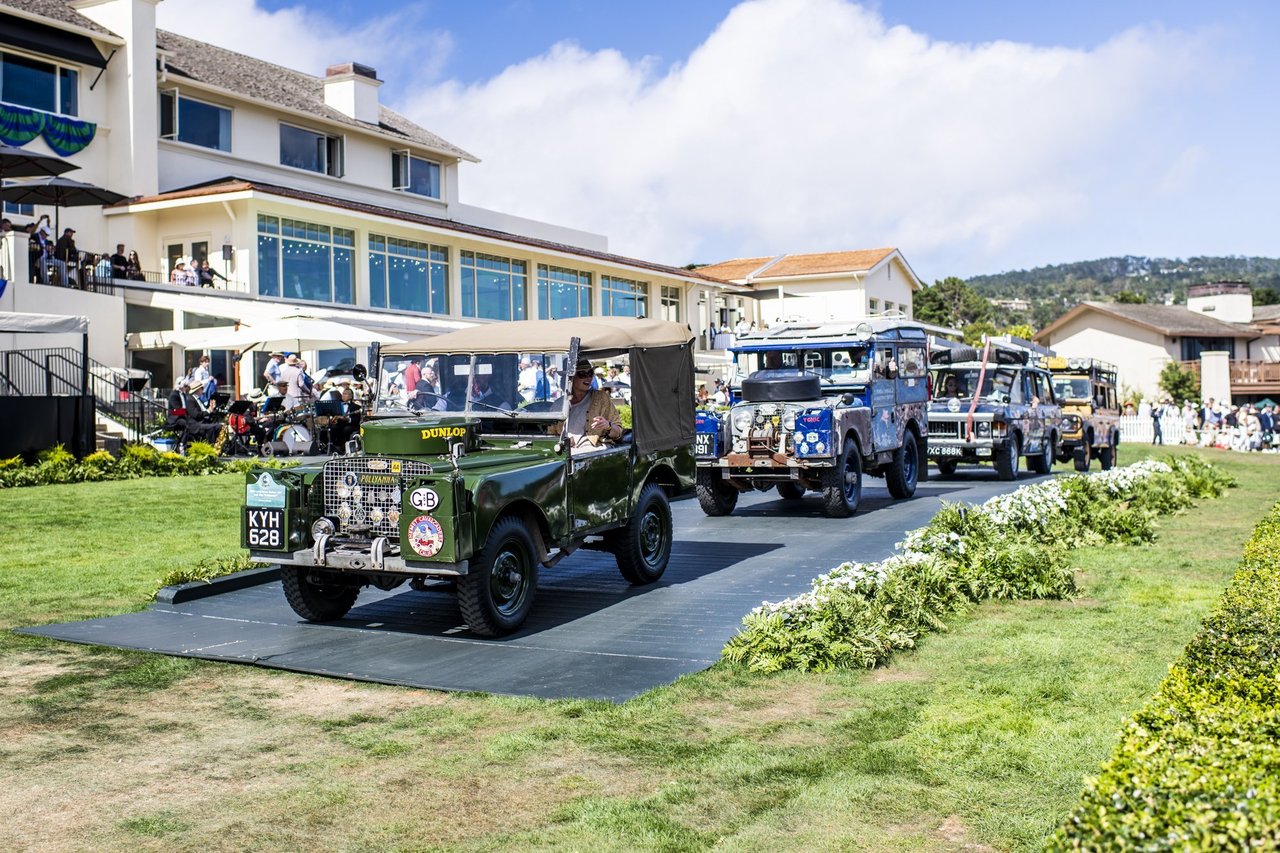
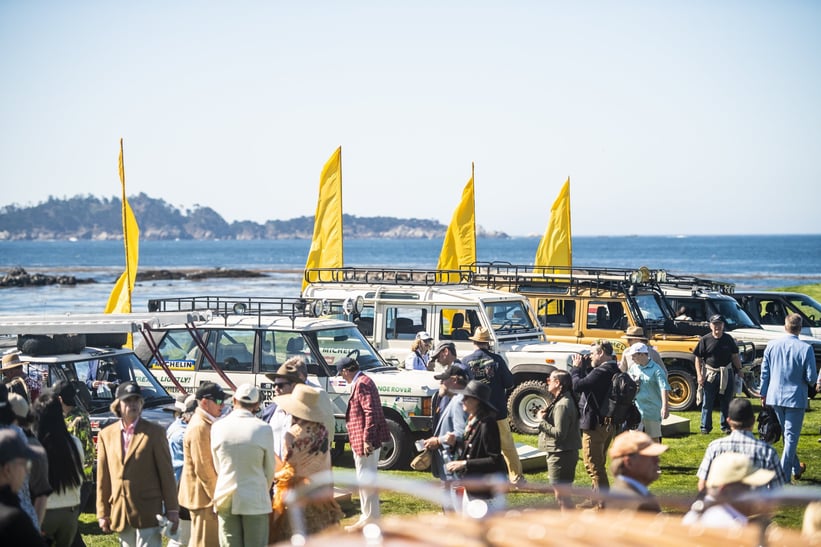
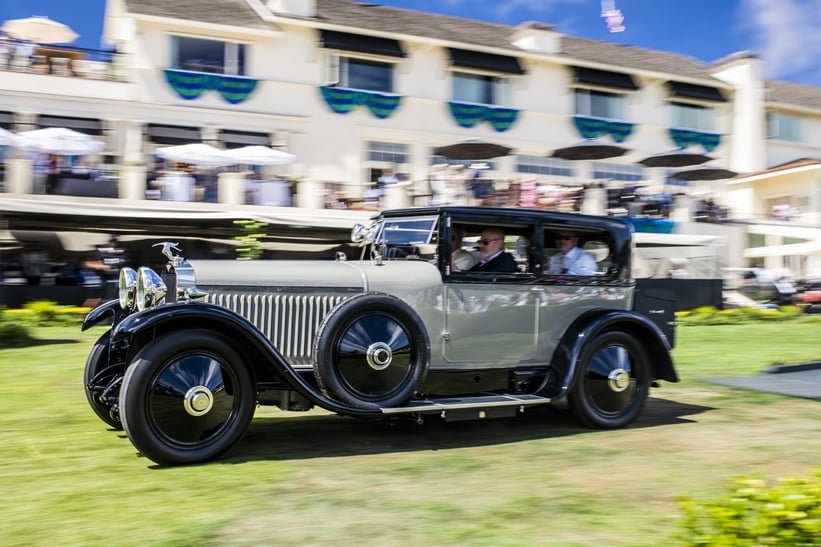
This year’s race for "Best of Show" featured several strong contenders, including the 1939 Maybach SW38 Spohn Sport Zweisitzer presented by Dana and Patti Mecum of Geneva Lake, Wisconsin; the 1933 Invicta 4½ Litre S Type Corsica Drophead Coupé shown by a certain SBH of Riffa, Bahrain; and the 1956 Maserati 200SI Fantuzzi Open Sports Racer presented by Phillip Sarofim of Beverly Hills, California. Meanwhile, the Classic Driver team was particularly attracted to the 1953 Siata 208 CS Balbo Coupé from the collection of Jonathan and Wendy Segal and the 1924 Hispano-Suiza H6C Hooper Saloon Limousine built for the "Bentley Boy" Glen Kidston and now brought to Pebble Beach by his nephew, Simon Kidston.
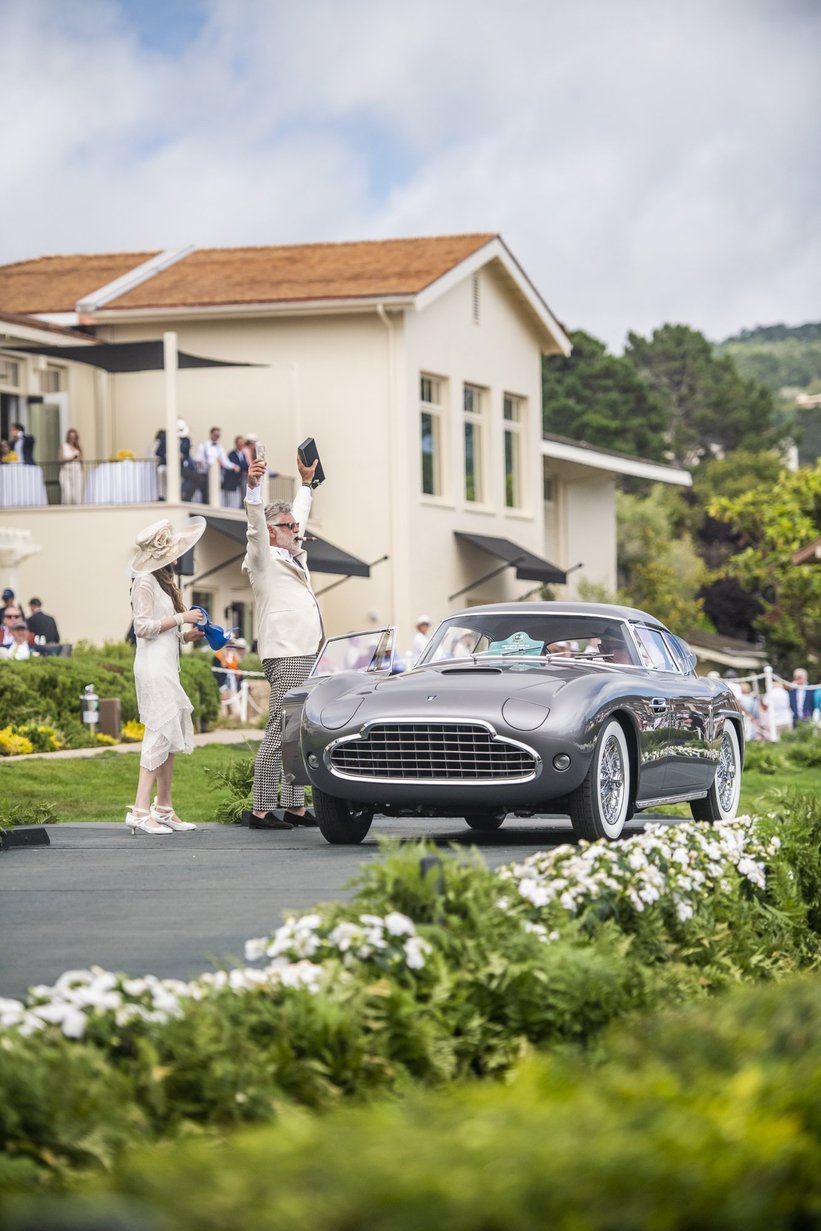
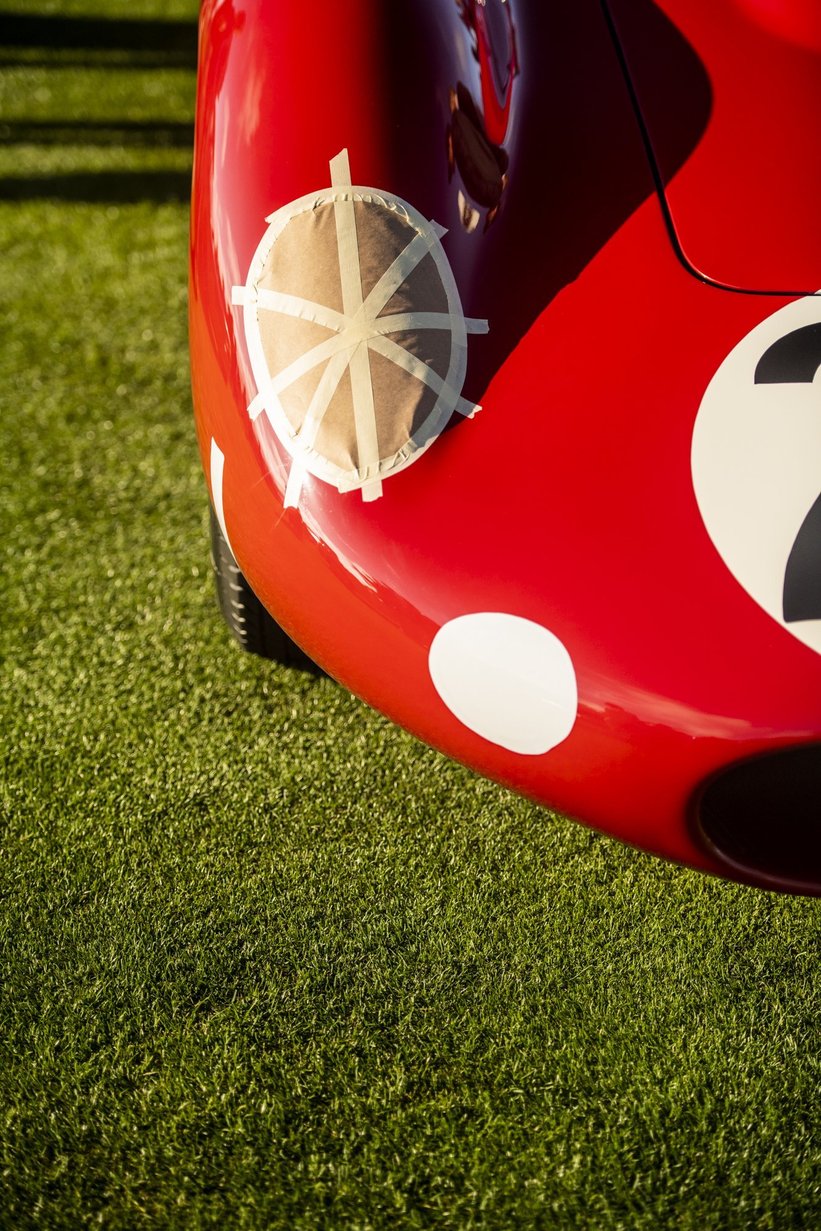
But in the end, we had known that there could only be one winner this year since we first saw it at the Pebble Beach Tour d'Elegance on Friday: The aero-inspired 1924 Hispano-Suiza H6C Nieuport-Astra Torpedo, better known as the "Tulipwood Torpedo", was awarded the top prize at the 2025 Pebble Beach Concours d’Elegance. Inspired by airplane design and constructed of strips of mahogany, each individually carved to shape and joined to the inner ribs by 8,500 rivets, the coachbuilt wonder was commissioned by French aperitif scion, flying ace, athlete and inventor André Dubonnet who raced the Hispano in both the Targa Florio and the Coppa Florio. In 2022, it headlined RM Sotheby’s Monterey sale, achieving $9.245 million — securing its place as one of the most significant and spectacular Hispano-Suizas ever built.
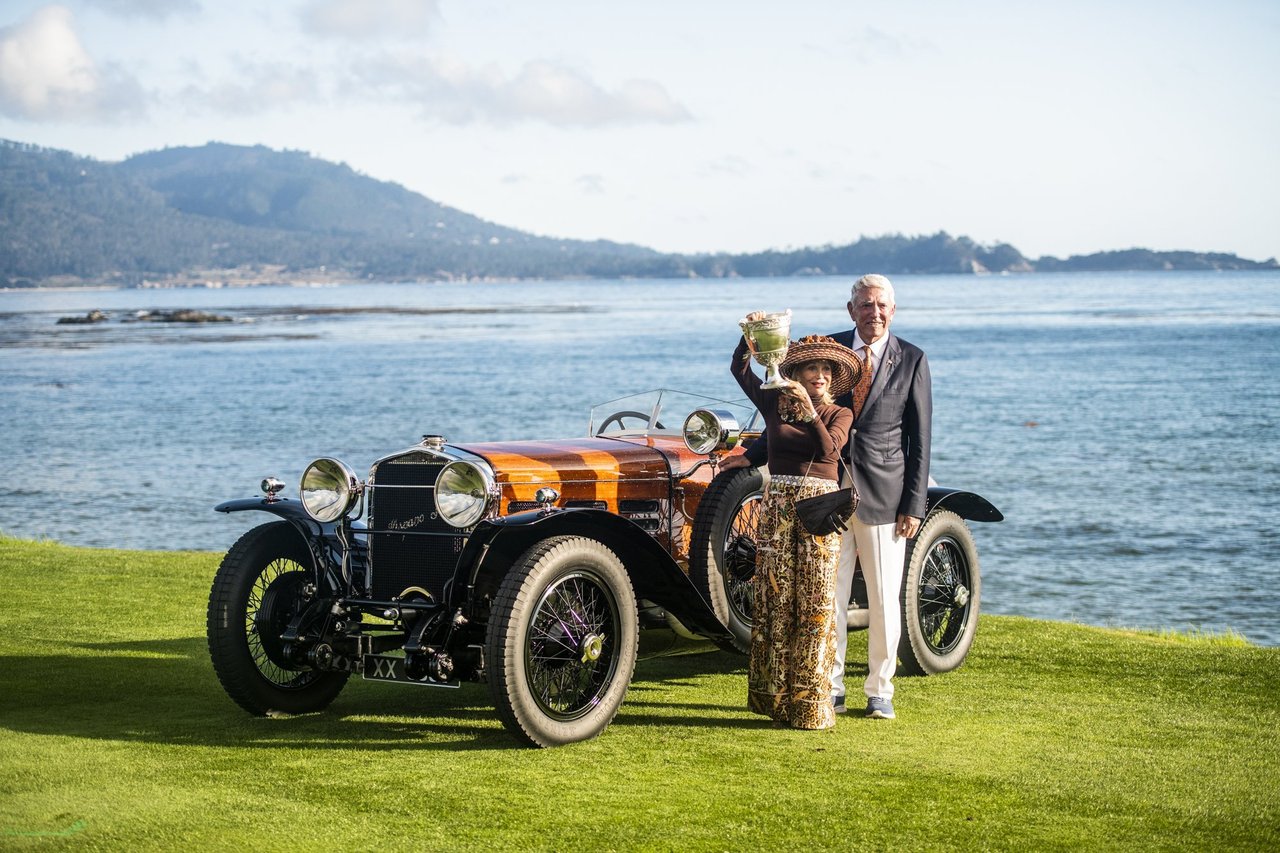
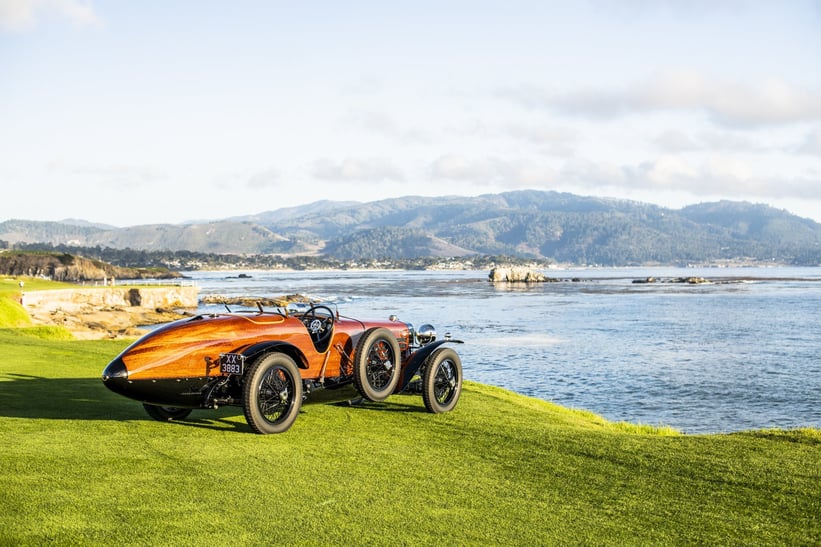
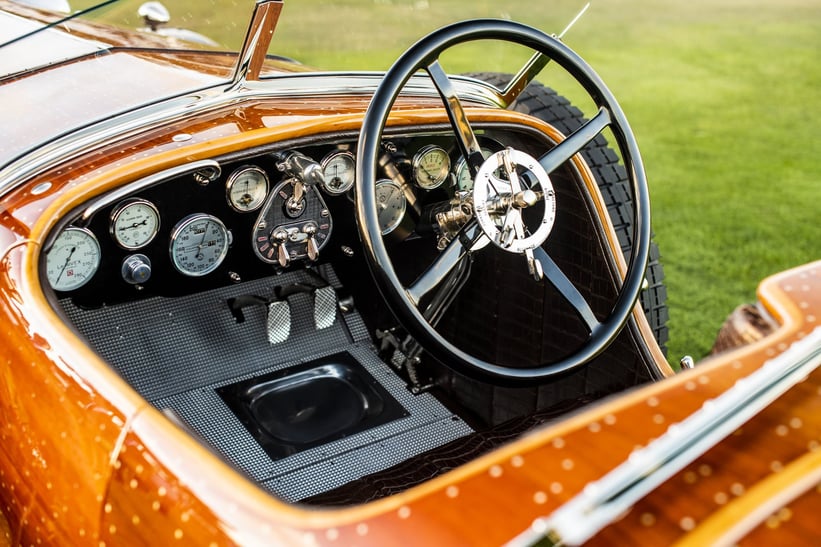
This year, the car had been brought to Pebble Beach by Penny and Lee Anderson Sr. of Naples, Florida. Lee Anderson said it was all the wood that first attracted him to the car. “I like wood! I’m a wood boat antique collector. I started collecting them 40 years ago, before it became vogue-ish to do that. So I’ve always loved varnished wood, and when I saw this I said, my gosh! This is right in my wheelhouse. This is what I really like.” “Winning Pebble Beach is probably the highest award you can get in automobile collecting,” Lee added. “We are very fortunate to have done it twice.” The Andersons previously took the top award at the 2022 Pebble Beach Concours with a Figoni-bodied 1932 Duesenberg J.
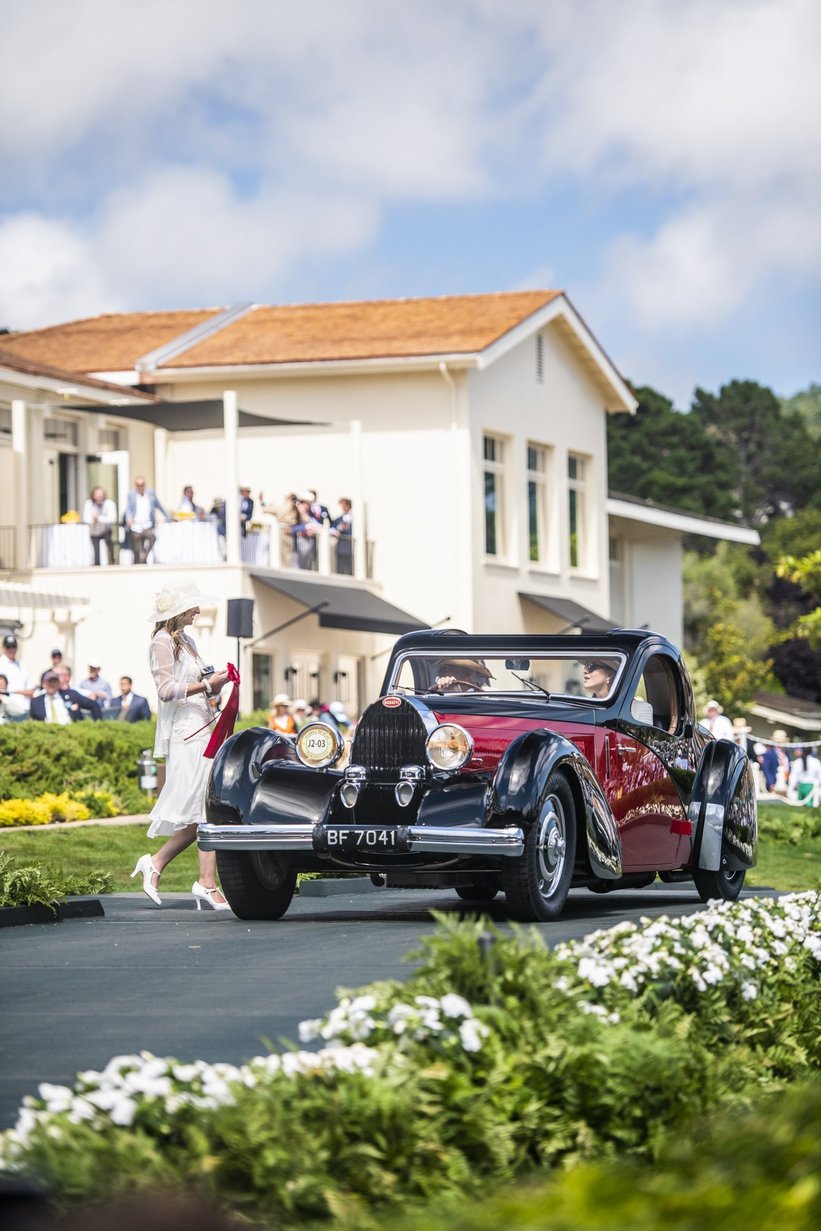
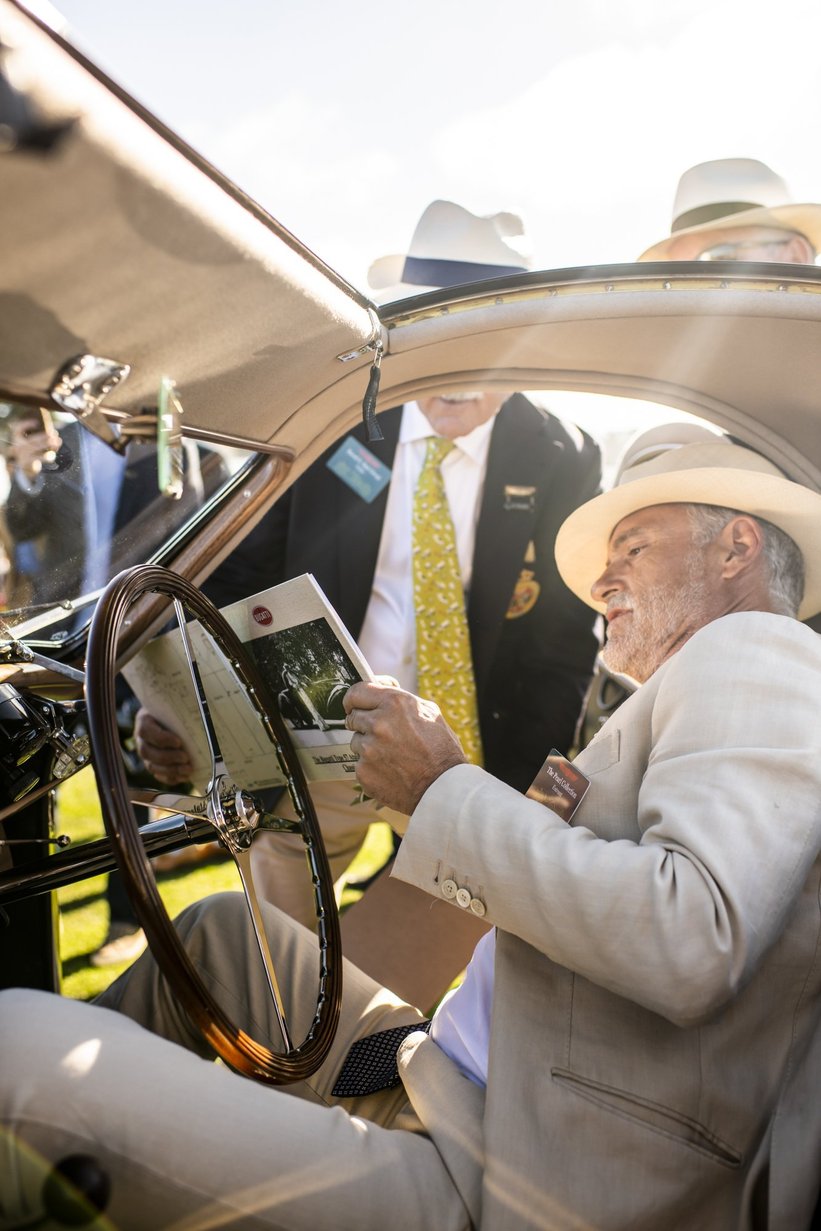
Meanwhile, last year's "Best of Show" winner Fritz Burkard had returned to Pebble Beach after a 3000+ mile coast-to-coast road trip from Newport, Rhode Island, with his 1937 Bugatti Type 57 Atalante Rolltop Coupé — proving once again that there is no car as beautiful as the one driven with passion on the road.
Photos: Rémi Dargegen for Classic Driver © 2025
































































































